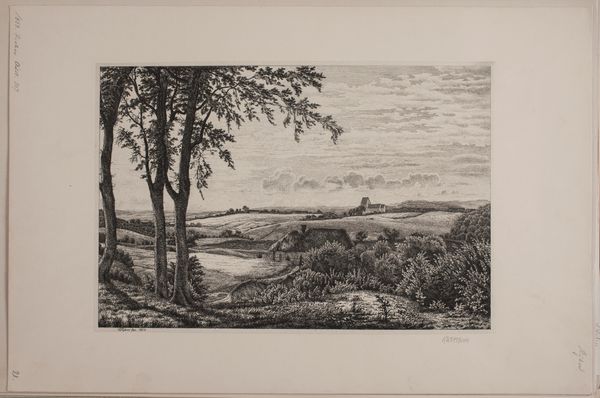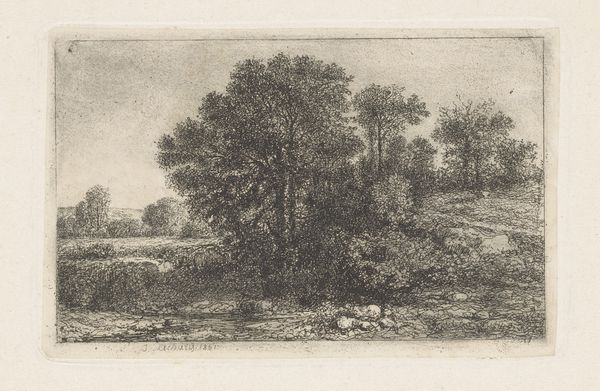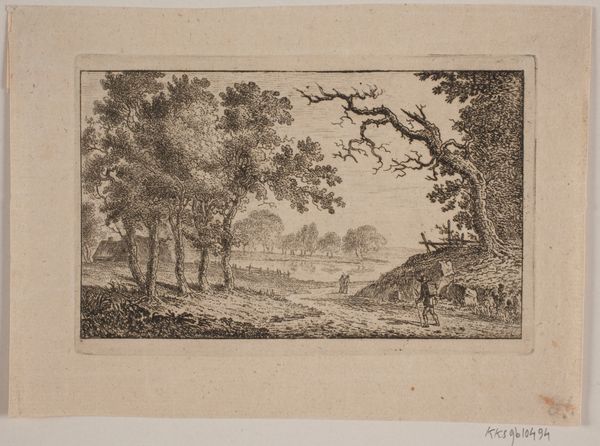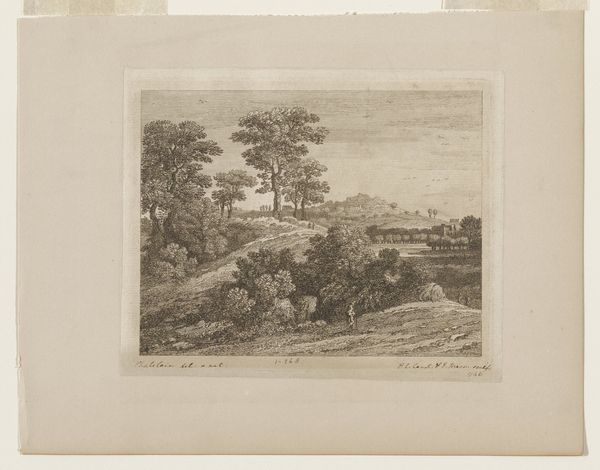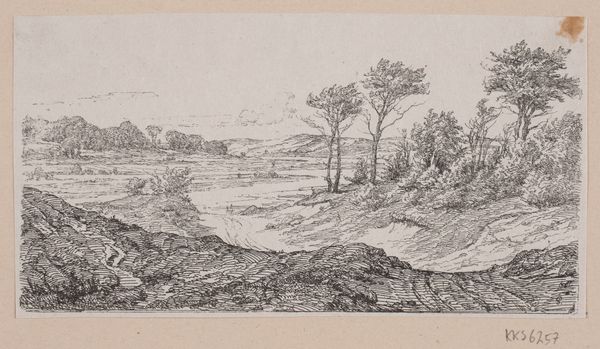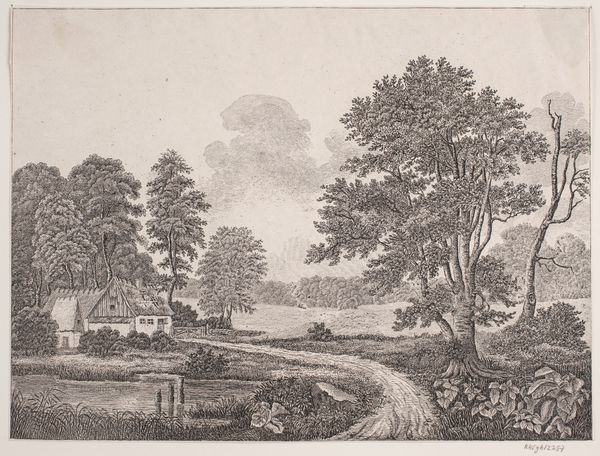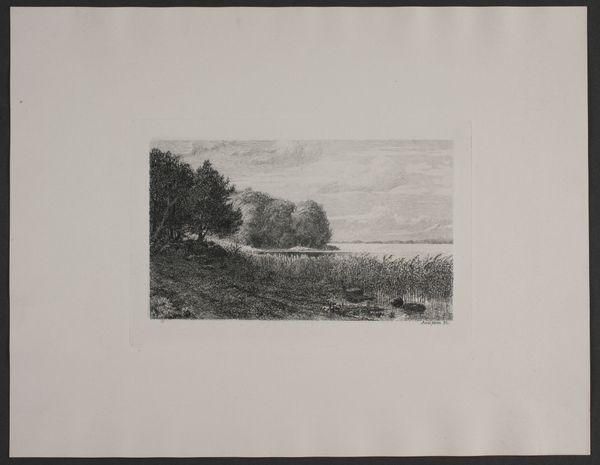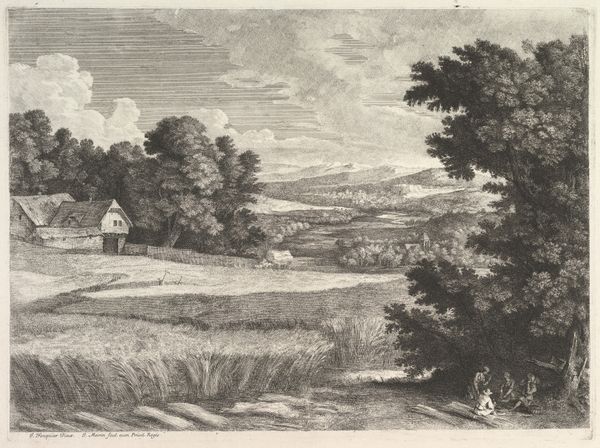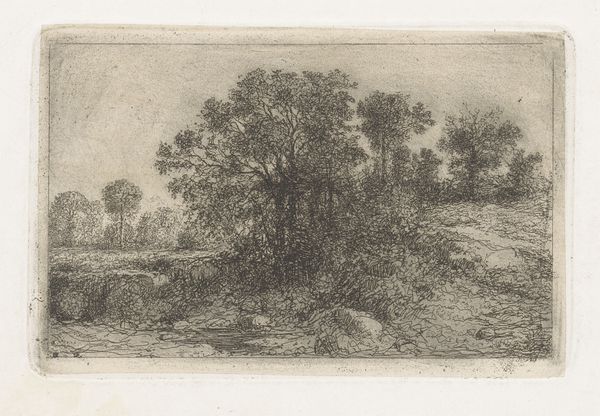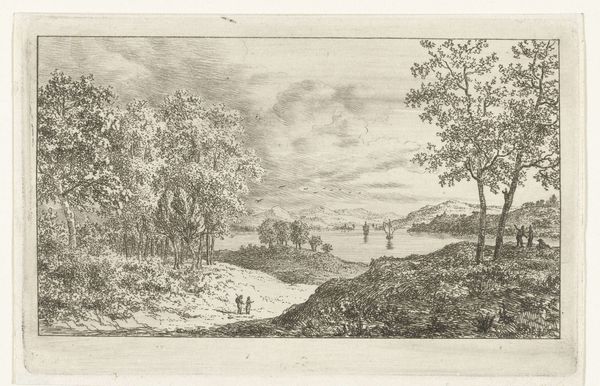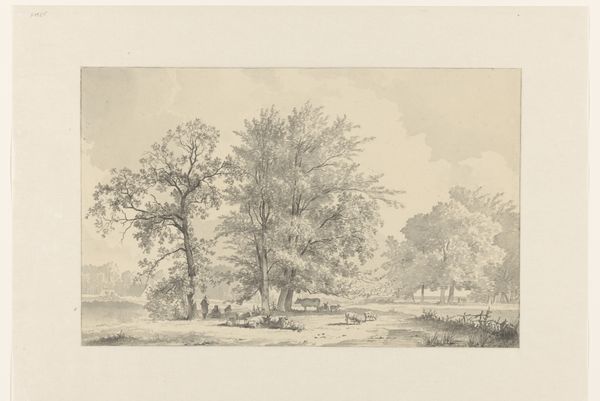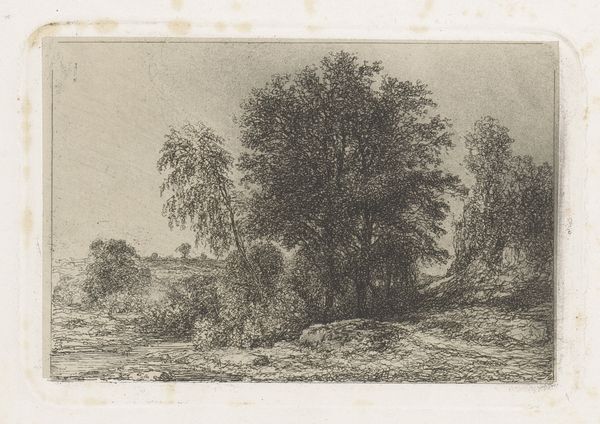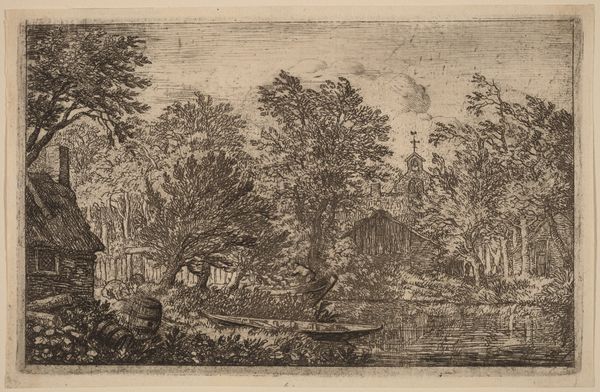
Dimensions: 224 mm (height) x 331 mm (width) (bladmaal)
Curator: Here we have Vilhelm Kyhn’s “Eftermiddagslandskab, Sjælland,” or "Afternoon Landscape, Zealand," an etching from 1858, currently held at the SMK – Statens Museum for Kunst. Editor: The fine hatching makes it feel both intimate and immense at once. There’s such a stillness about it too; it gives the sense that the land itself is quietly observing. Curator: Indeed. Kyhn was a proponent of finding a uniquely Danish aesthetic, turning to the Zealand landscape as a source of national identity. This etching presents a romanticised view of rural life, one deeply intertwined with notions of nationhood and belonging during a period of intense nationalist sentiment. Consider, too, the implicit gendering of the landscape; who has access and control? Who benefits? Editor: Looking at the texture and depth achieved through etching, one considers the skill, time, and labour involved. Think of the metal plates and the acidic baths required for this detailed process and also the networks of production and distribution necessary to print and circulate this image. It begs the question: who produced the materials, and whose labour was involved in circulating this idealized landscape? Curator: Excellent point. Kyhn’s positioning within the cultural elite provided him a distinct lens for observing and idealising the rural populace. It becomes crucial to dissect this seemingly neutral scene for its classist undertones and implicit social commentary on labour and land ownership. We need to explore how he romanticized a national ideal for specific political purposes, perhaps excluding or marginalizing some communities. Editor: And in idealizing this image of Zealand, one asks which aspects of the region he omits and why? I’m intrigued by the labor-intensive etching process that allowed him to then disseminate this image to a much wider audience, which could fuel debates surrounding national identity. Curator: His aesthetic choices in turn influenced subsequent generations, setting certain visual standards. I appreciate this reminder of art's social life, constantly produced and reproduced through networks of labor, ownership and ideology. Editor: Exactly, a landscape is never just a landscape, but an amalgamation of human intervention and social processes. It shifts my perception of art. Curator: It reminds us to look beneath the surface of art, searching out power dynamics. Editor: Absolutely, now let’s find more examples of these intersecting processes...
Comments
No comments
Be the first to comment and join the conversation on the ultimate creative platform.
